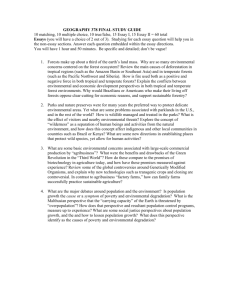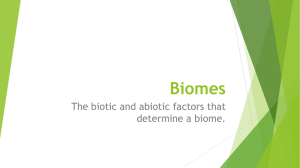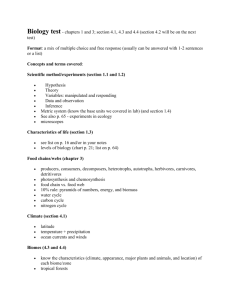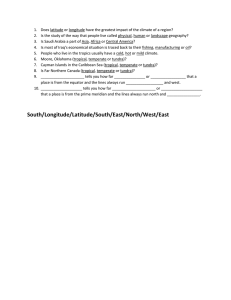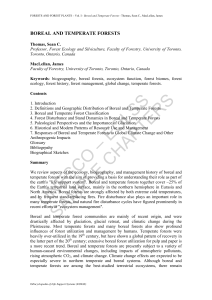Chapter 5 Biomes: Global Patterns of Life
advertisement
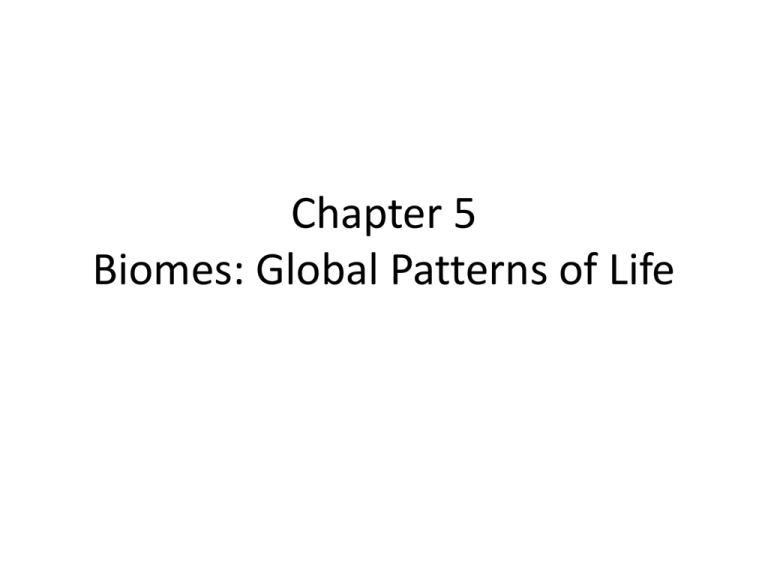
Chapter 5 Biomes: Global Patterns of Life Terrestrial Biomes • Tropical moist forests are warm and wet year-round • Tropical seasonal forests have annual dry seasons • Tropical savannas and grasslands are dry most of the year • Deserts are hot or cold, but always dry • Temperate grasslands have rich soils • Temperate shrublands have summer drought • Temperate forests can be evergreen or deciduous • Boreal forests occur at high latitudes or altitudes • Tundra can freeze in any month Tropical Moist Forest Tropical Seasonal Forest Tropical Savanna Hot Desert Cold Desert Temperate Shrubland Temperate Grassland Temperate Forest Temperate Rain Forest Boreal Forest Tundra Marine Ecosystems • Benthic = On the Bottom • Pelagic = In the water • Open-ocean communities vary from surface to hadal zones – Epipelagic (Photic) 0-20 m – Mesopelagic 20-1000 m – Bathypelagic 1000-4000 m – Abyssal 4000-6000 m – Hadal > 6000 m Coastal zones • Coastal zones support rich, diverse biological communities – Littoral = Near Shore – Intertidal = Within Tidal Range – Coral Reefs – Mangroves – Estuaries (Flooded Valleys) – Salt Marshes – Barrier Islands Fringing Reef, Tahiti Tidal Marshes, Chesapeake Bay Estuaries, Chesapeake Bay Mangrove, Florida Freshwater Ecosystems • Lakes have open water • Wetlands are shallow and productive – Swamp = With Trees – Marsh = No Trees – Bog = Saturated Ground • Fen = Bog fed by ground water Okeefenokee Swamp, Georgia Marsh, Everglades Human Disturbance • Clearing Forests • Draining or Filling Wetlands • Changing Land Cover, Vegetation, Biological Communities • Introducing Species – On a Long Time Scale, Anything that Can Happen, Will Happen – We’re Putting the Biosphere in a Blender Human Landscape, Los Angeles Human Landscape, Nebraska Human Landscape, Greece Human Landscape, Scotland Human Landscape, Wisconsin Human Landscape, Costa Rica

